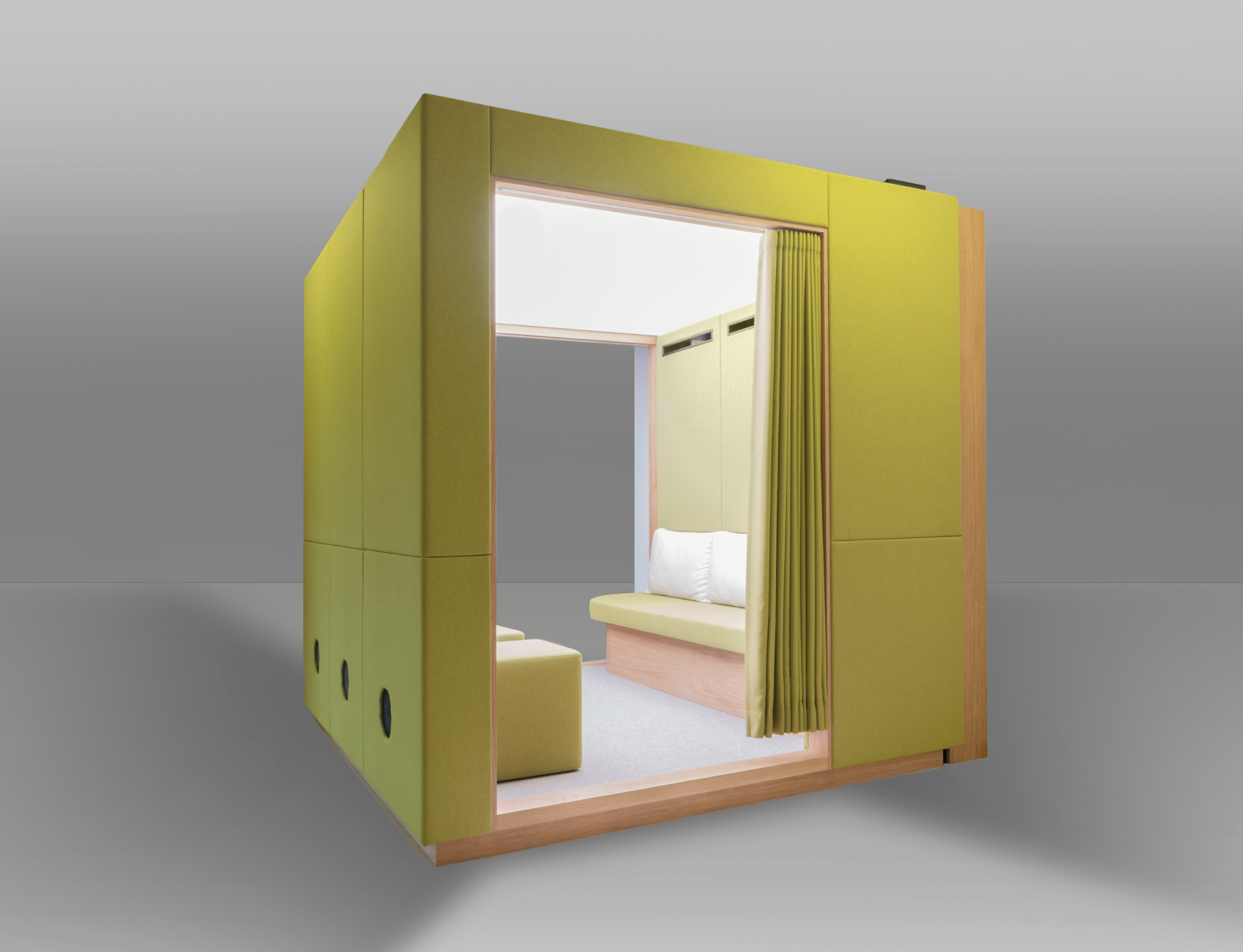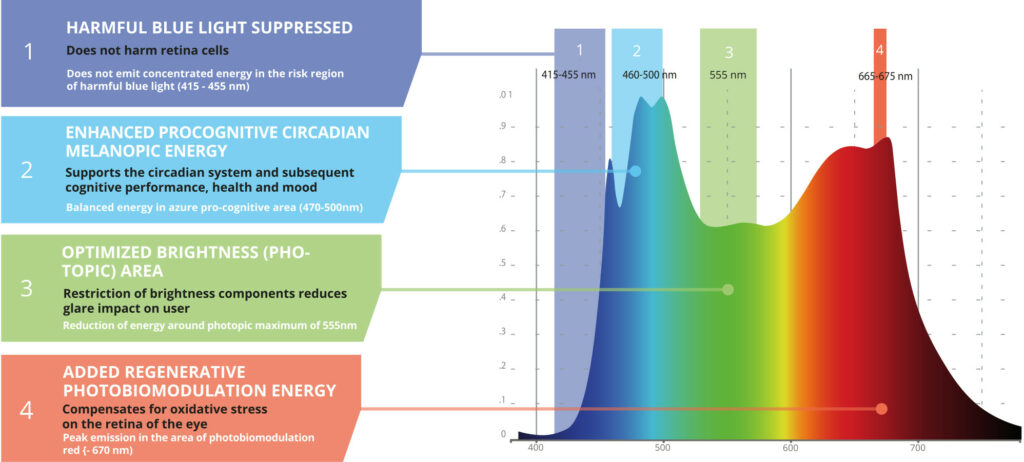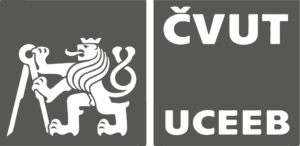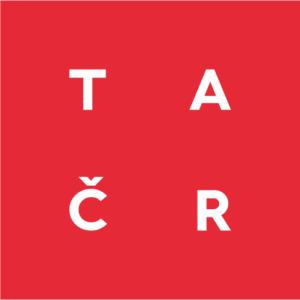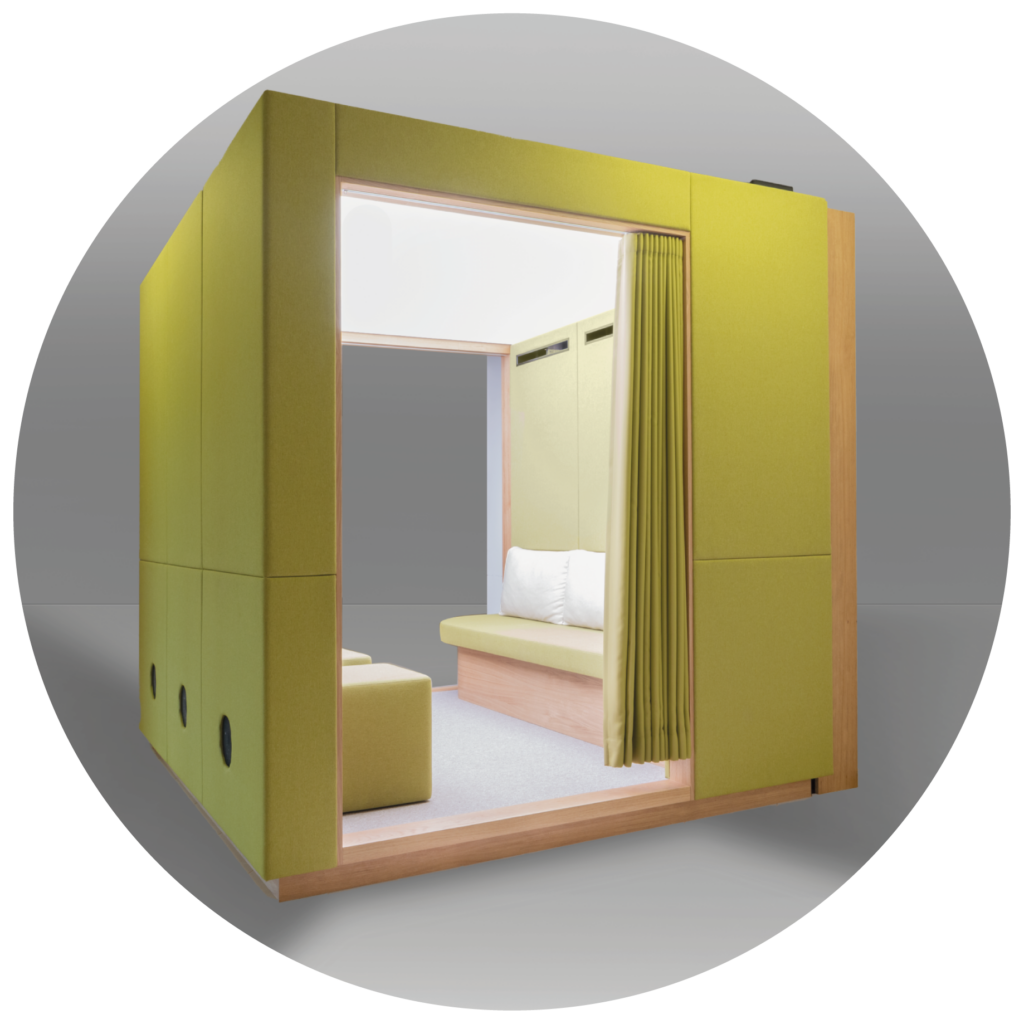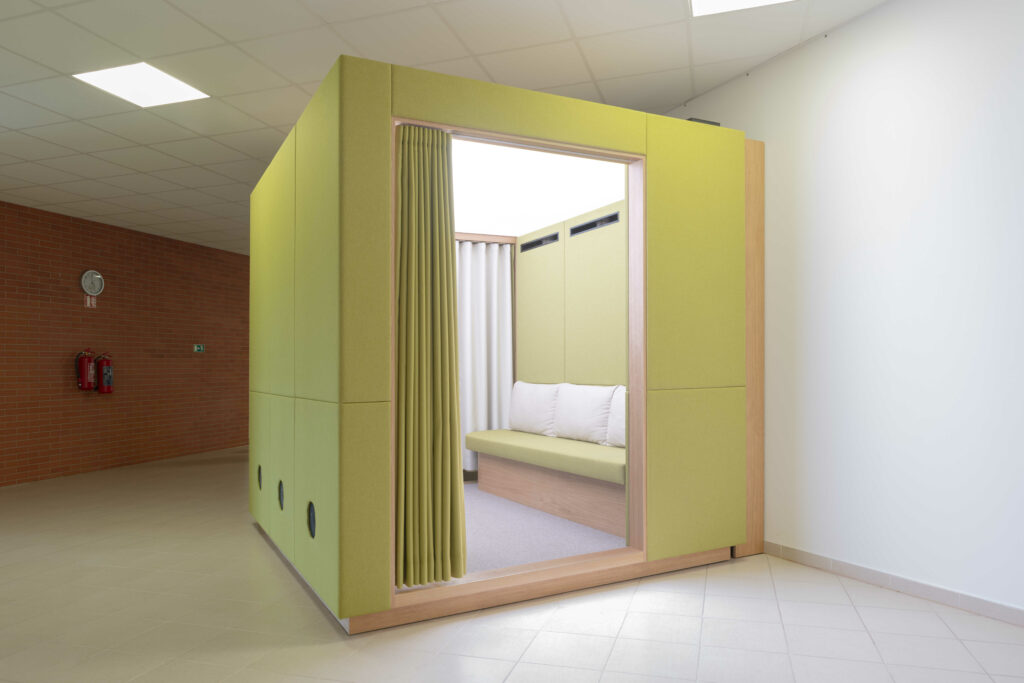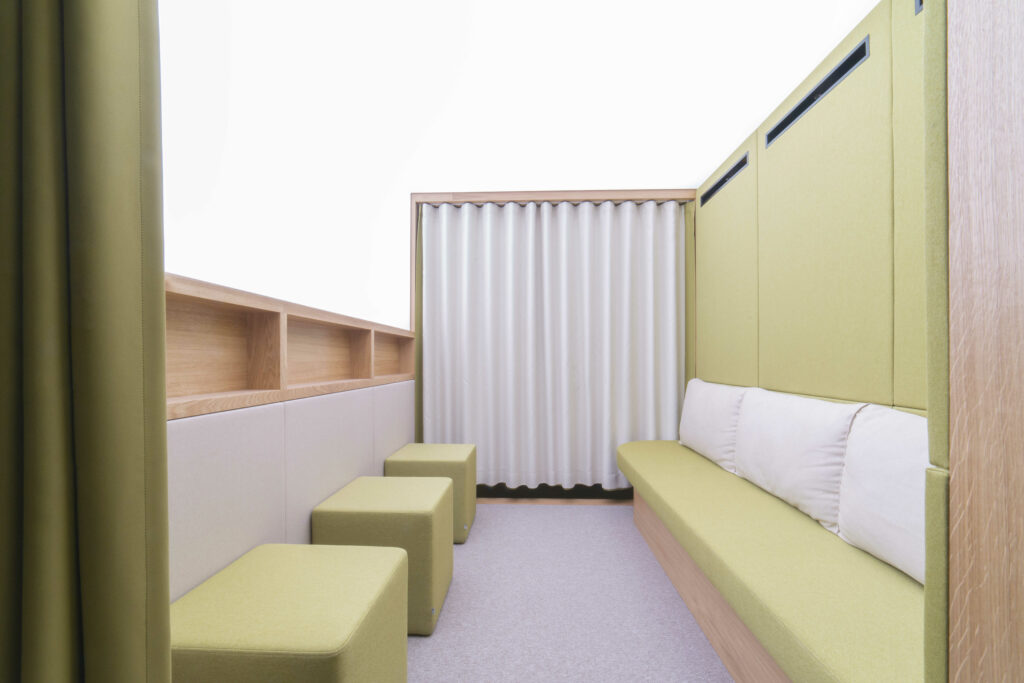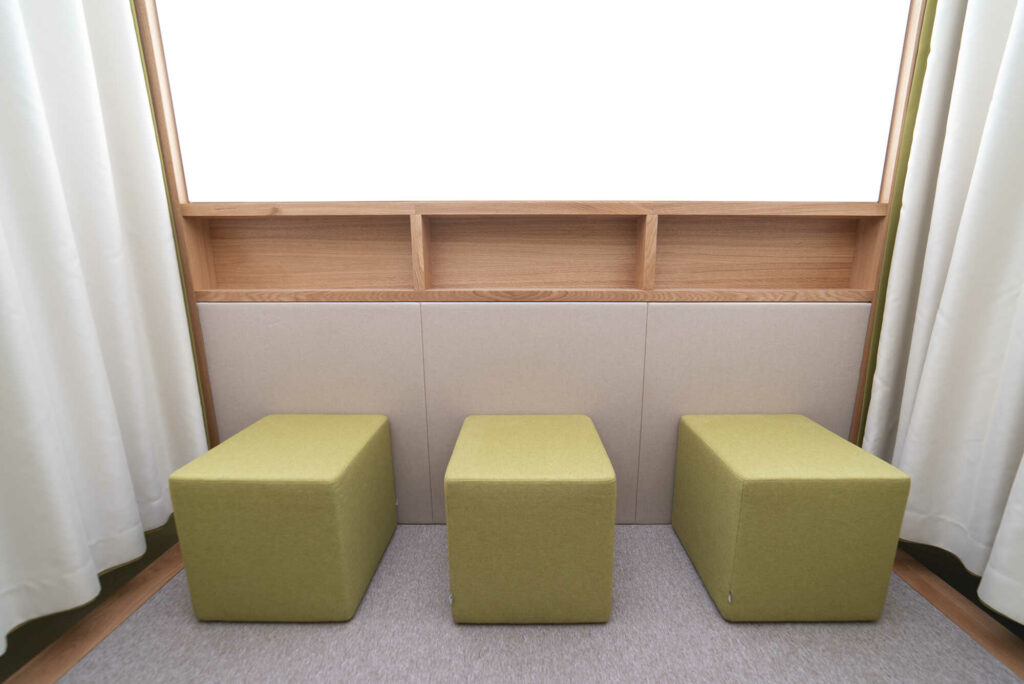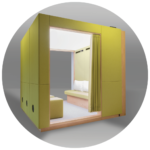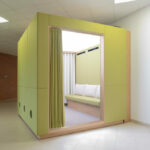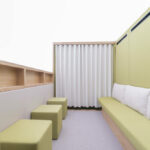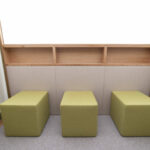The pavilion is a large-scale phototherapy device for the treatment and support of psychological states and stabilisation of circadian rhythms. It is a standalone cube-shaped structure with a side of approximately 2.5 metres, which can be placed in a hall, waiting room in a mental health centre or similar institution providing inpatient and outpatient care. Inside there is a space offering comfortable seating for up to 6 people.
The whole structure is designed as a pleasant modern solution using a combination of soft upholstered surfaces in light colours and natural wooden surfaces. The entire ceiling and half of one of the side walls are fitted with LED light sources with diffusers so that the entire area is illuminated and its low, balanced brightness creates the feeling of an open sky space. The two side walls of the pavilion are free, equipped with curtains, create a private space and, at the same time, promote an even distribution of light.
The effectiveness of the Spectrasol phototherapy pavilion is ensured by the combination of high luminance, uniquely effective spectral composition and multidirectional, uniform light distribution in space. For good acceptance of the therapy by the patient, visual comfort during phototherapy is ensured, which depends on the size of the illuminating surface, its location in the field of vision and the brightness ratios it creates.
The high therapeutic effectiveness is made possible by the use of the unique Spectrasol Therapeutic light spectral composition technology (protected by Patent No. 308363) with a high representation of wavelengths in the photosensitivity range of the ipRGC cells, which act on the circadian system. At the same time, the spectral distribution is favourable to users’ eyes by limiting harmful blue wavelengths below 450 nm and encompassing red wavelengths of around 670 nm.
Spectrasol’s unique spectral power distribution and key areas of emitted therapeutic light

Compared to commonly available phototherapy facilities, the pavilion offers a spatial solution with a large light source that covers more than 40% of the field of view. The dominant light flow is directed from above. The large emitting area allows for the light to be pleasantly diffused in the space without the glare of high brightness on the surface.
The power of the light source can be continuously regulated according to the therapy needs. The basic setting offers two levels. At higher power, the so-called therapeutic mode, the illuminated area reaches the average surface brightness of the summer sky. At lower power, in the so-called civil mode, the brightness of the area corresponds to the overcast sky. The achieved luminance converted to the melanopic photosensitivity of ipRGC cells (melanopic EDI) corresponds to the values required in the Czech and international phototherapy standards.
Proven effectiveness
The National Institute of Mental Health of the Czech Republic checked the effectiveness of phototherapy in the Spectrasol phototherapy pavilion on healthy population and clinical subjects. The aim was to test whether the technology affects circadian rhythms, subjective experience, cognition and physiological variables, both immediately after a single exposure and after regular repeated exposure. The verification was conducted in the following six areas:

- Visual comfort
- Affective experience and mood
- Cognitive functions
- Sleep
- Circadian rhythms
- Monitoring patient cooperation
- Electrical activity of the brain
When applying the device, it is possible to use the detailed certified methodology of the National Institute of Mental Health of the Czech Republic, which is available here.
Technical data
| Dimensions of the pavilion |
2500x2400x2550 mm |
| Light area |
3100×2200 mm |
| Melanopic daylight efficiency ratio (melanopic DER) |
0.934 |
|
civil regime |
therapeutic regime |
| Photopic luminance* |
2300 lx |
8000 lx |
| Equivalent melanopic daylight luminance* |
2100 lx |
7000 lx |
| Power input |
2500 W |
800 W |
| Correlated colour temperature (CCT) of the light |
5000 K |
| Colour rendering index (CRI) |
>80 |
* on the pupil of a seated person
Therapy can only be carried out on the recommendation and according to the instructions of a specialist physician or therapist. Failure to observe this advice can cause adverse effects on the body.
The development and application methodology of the device were developed in cooperation with CTU UCEEB and the National Institute of Mental Health under project No. FW02020025 funded with the support of the Czech Technology Agency and the Ministry of Industry and Trade of the Czech Republic as part of the TREND programme



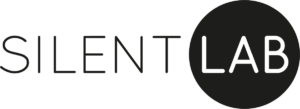 We manufacture and distribute the pavilions in cooperation with the renowned Czech company Silentlab.
We manufacture and distribute the pavilions in cooperation with the renowned Czech company Silentlab.
